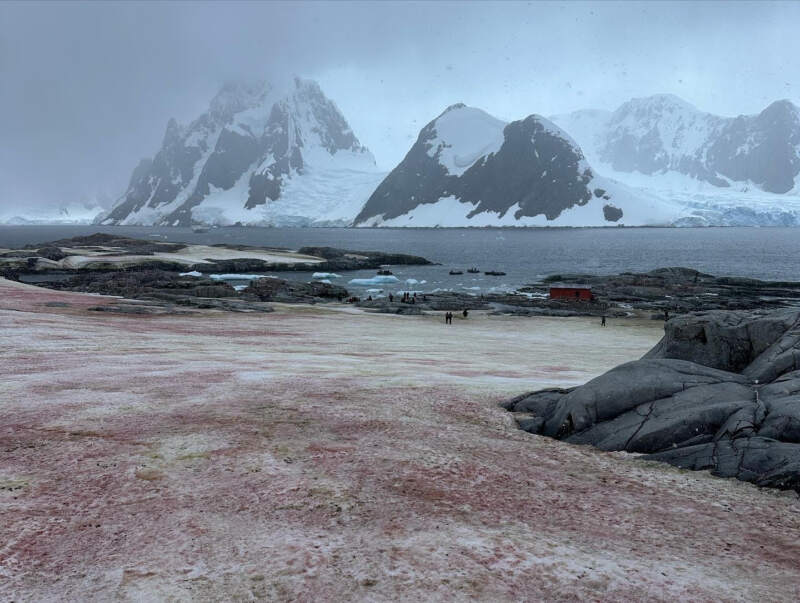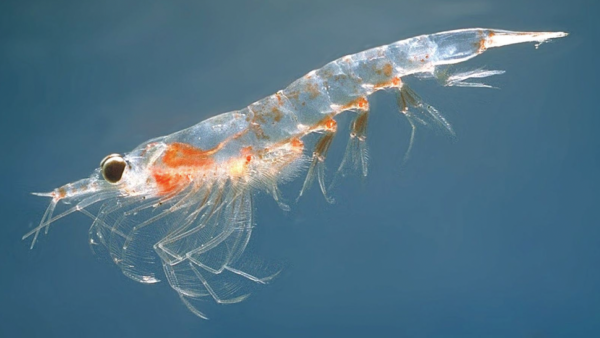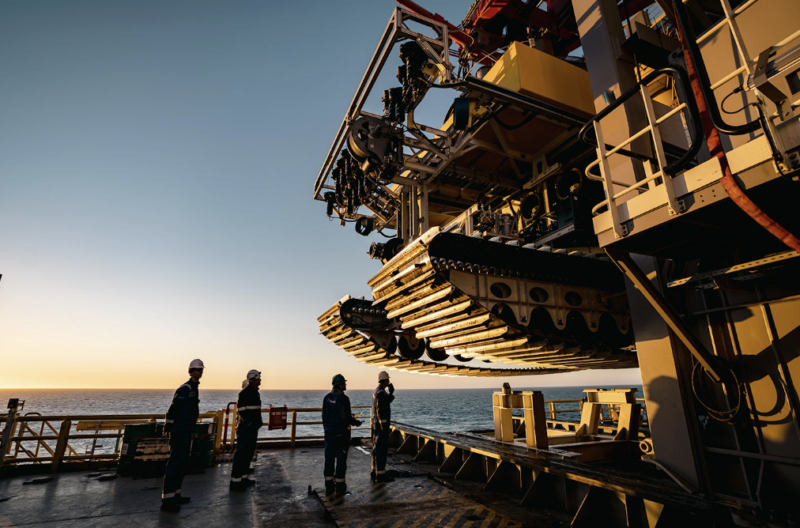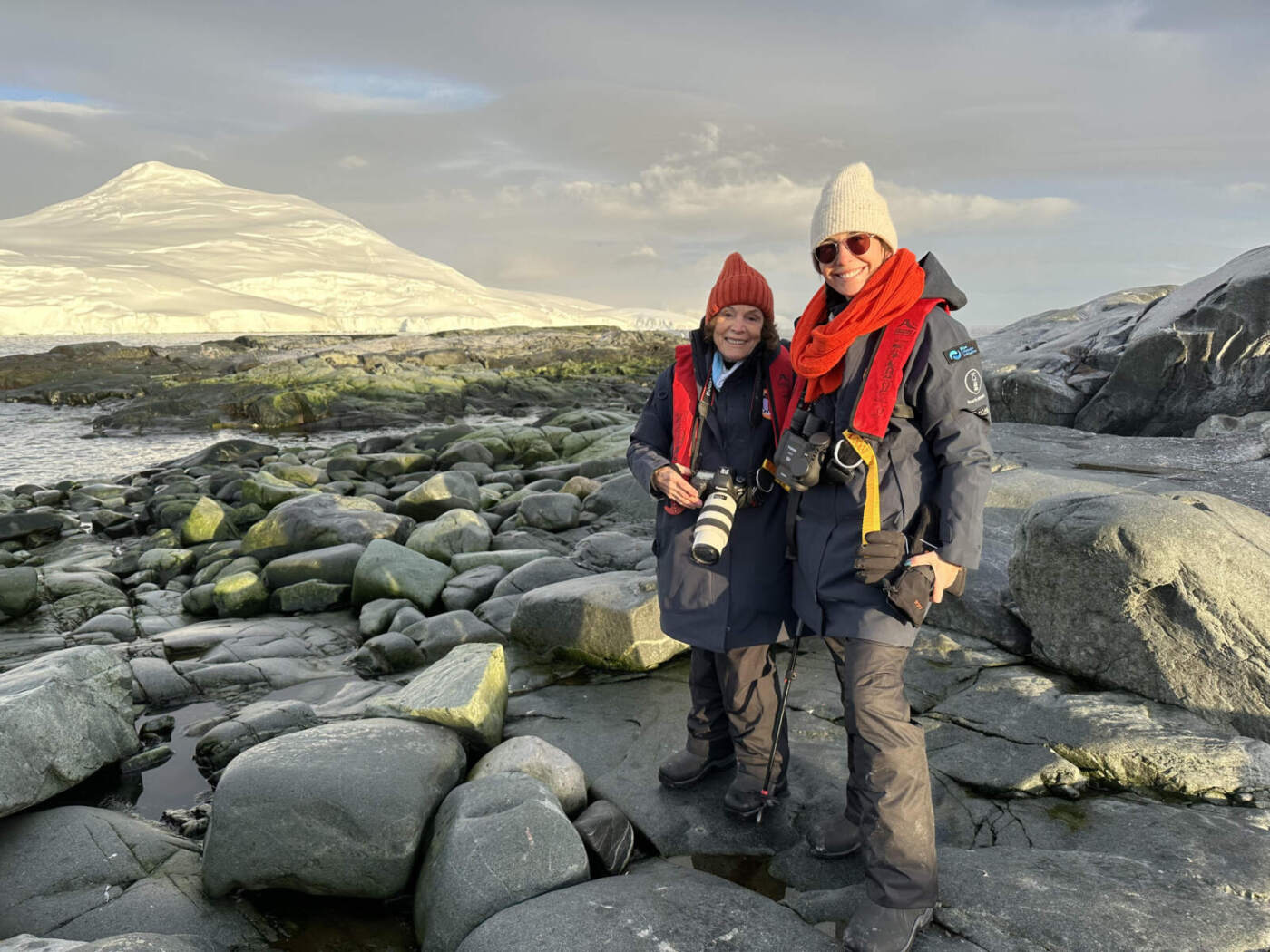In February I had the opportunity to travel to Antarctica alongside the distinguished oceanographer Sylvia Earle and about 100 other scientists, legislators, artists, community organizers, and philanthropists. Together we experienced extraordinary natural wonders, saw the impacts of human-made warming first hand, and exchanged climate-related expertise.

Here, on Petermann Island, it was warm enough for algae to grow. (Green = algae. Pink = penguin poop.)
It was eye opening to spend a couple of weeks with people who knew A LOT about the ocean. I realized how much I have to learn, which is humbling but also energizing as I enjoy digging in on an unfamiliar topic. Now, for better or worse, pretty much anyone who crosses my path has to listen to me talk about a couple of ocean issues that I was barely aware of just months ago.
In Antarctica, I learned that we seriously overfishing a creature you may have never heard of before, one so little that you can easily fit it into the palm of your hand.

Credit: Øystein Paulsen
I am speaking of small but mighty krill, which are crustaceans, about two inches in length that look like glassy shrimp. Krill are thought to have a collective mass of 300-500 million tons, more than any other animal on earth. They were once believed to be in infinite supply.
So, why should we care about krill, of all things? In spite of their scale, as National Geographic states, krill “represent a giant-sized link in the global food chain… they are essentially the fuel that runs the engine of the Earth’s marine ecosystems.”
Who eats all these little crustaceans?
- Whales, penguins and other sea birds, squid, seals, a variety of fish

- Some of these animals, like chinstrap penguins (seen above), exclusively eat krill
- Populations of chinstraps have substantially declined in recent years and that decline has been attributed to krill overfishing and climate change
- Krill is also used as fish bait and as feed for farmed fish
- Krill is in some dog and cat food
- And humans consume krill, in the form of vitamin (omega 3) supplements
In addition to feeding the sea, a 2020 study conducted by the British Antarctic Survey revealed that large krill swarms act as substantial carbon sinks, transferring 0.3 million tonnes of carbon daily – equivalent to the daily domestic CO2 emissions of the UK.
Is krill fishing regulated?
- Yes. Krill fishing regulations are set by the Commission for the Conservation of Antarctic Marine Living Resources (CCAMLR) which was established by international convention in 1982.
- But there are concerns about the model that sets current CCAMLR catch limits as it does not, for example, take into account the rate of krill decline due to climate change.
Now what?
- Some NGOs are calling for an all-out ban on krill fishing. Others are pushing CCAMLR to take stronger action.
In the meantime, some simple choices my family and I are making:
- Choosing pet food that does not contain krill.
- Choosing supplements that do not contain krill.
Up next time… this machine, coming soon to an ocean floor near you…

Allison Agsten is the Director of the Center for Climate Journalism and Communication.
